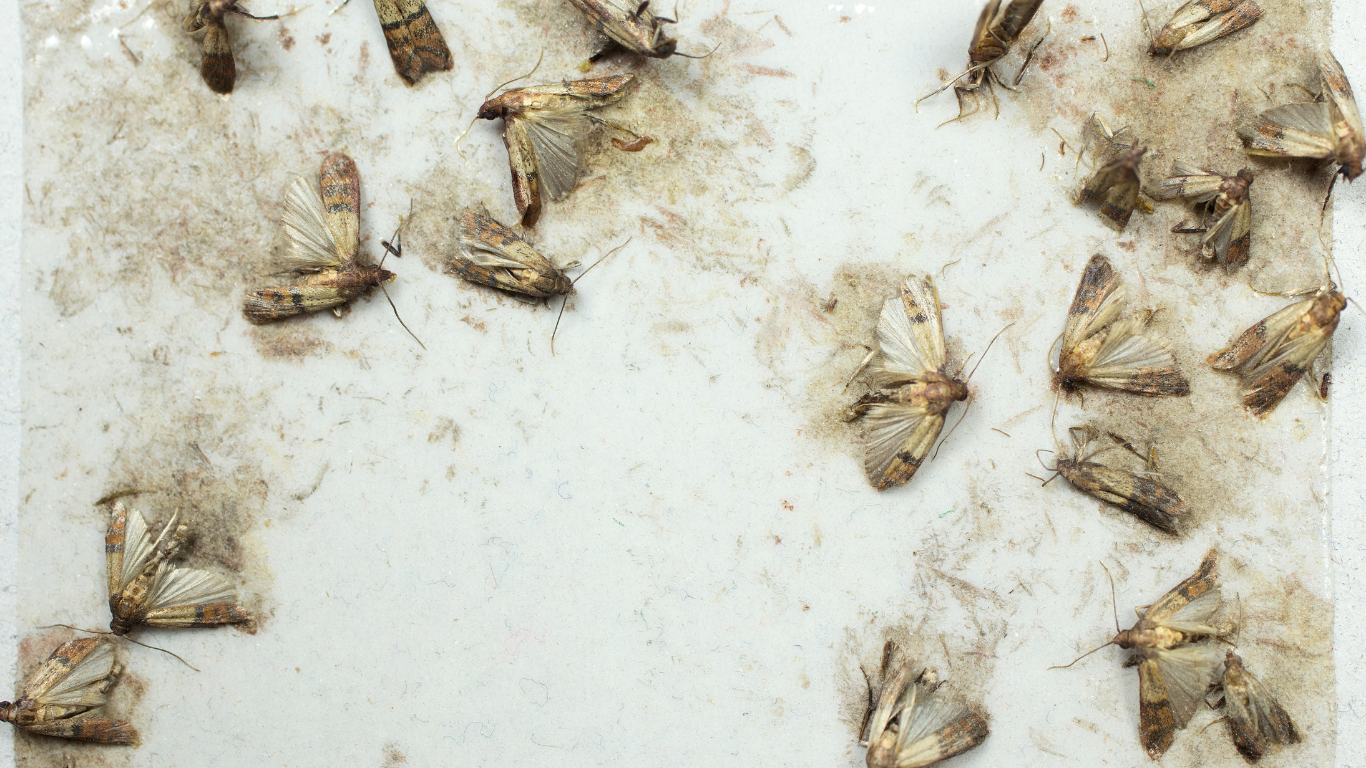
Type of treatment
Number of cards


















Explanation of treatment types
Parasitic wasps against food moths
-
100% natural help against food moths
-
From German breeding – delivered quickly
-
Completely chemical-free – no residues
-
Discreet, effective & biologically sustainable
-
Safe for children and pets
In stock - in 2-4 working days with you
Was unsere Kund*innen sagen
-
Wirksamkeit
nicht wirksam sehr wirksam -
Anwendung
kompliziert kinderleicht -
Verträglichkeit
bedenklich sehr sicher
Choose options
-
100% natural help against food moths
-
From German breeding – delivered quickly
-
Completely chemical-free – no residues
-
Discreet, effective & biologically sustainable
-
Safe for children and pets
In stock - in 2-4 working days with you
Was unsere Kund*innen sagen
-
Wirksamkeit
nicht wirksam sehr wirksam -
Anwendung
kompliziert kinderleicht -
Verträglichkeit
bedenklich sehr sicher
-
100% natural help against food moths
-
From German breeding – delivered quickly
-
Completely chemical-free – no residues
-
Discreet, effective & biologically sustainable
-
Safe for children and pets
In stock - in 2-4 working days with you
Was unsere Kund*innen sagen
-
Wirksamkeit
nicht wirksam sehr wirksam -
Anwendung
kompliziert kinderleicht -
Verträglichkeit
bedenklich sehr sicher
Parasitic wasps against food moths
Discover the natural solution for a moth-free home – completely chemical-free. Our GREEN GUARDIA parasitic wasps are tiny but effective beneficial insects for targeted control of food moths.
What are parasitic wasps?
Ichneumon wasps ( Trichogramma evanescens ) are only 0.3–0.4 mm in size – virtually invisible to the human eye. They don't sting , don't fly , and leave no residue . Their job: to locate and destroy moth eggs .
How do they work?
- The parasitic wasps hatch from the cards that you place in your storage cupboards.
- They actively search for moth eggs within a radius of approximately 1 m² .
- The eggs are parasitized – destroyed before moths can hatch.
- Once the work is done , they disintegrate without leaving any residue .
Application & Placement
Place the cards directly in the affected cabinets, shelves, or drawers . We recommend one card per 1 m² or per shelf. Application is extremely easy and discreet .
How many cards do I need?
| Room size | Recommended number of cards |
|---|---|
| Very small kitchen (up to 8 m²) | 1–3 cards |
| Normal kitchen (9–15 m²) | 4–9 cards |
| Large kitchen (16–30 m²) | 10–18 cards |
Die Einzellieferung
Starke Ergänzung für volle Kontrolle!
Du hast bereits eine 9-wöchige Behandlung gegen Lebensmittelmotten durchgeführt und möchtest auf Nummer sicher gehen? Kein Problem – mit unserer Einzellieferung stärkst du den nachhaltigen Schutz gezielt nach.
Vollbehandlung mit 3 Lieferungen:
Die Lebensdauer einer Lebensmittelmotte beträgt etwa 6–9 Wochen. Um den gesamten Entwicklungszyklus zuverlässig zu durchbrechen, versenden wir die Schlupfwespen in drei zeitlich versetzten Lieferungen:
- 1. Lieferung: Erste Schlupfwespen zerstören vorhandene Eier.
- 2. Lieferung (Woche 3): Neue Parasiten bekämpfen frisch gelegte Eier.
- 3. Lieferung (Woche 6): Finaler Schutz & Unterbrechung des Zyklus.
📦 Tipp: Die Einzellieferung eignet sich auch perfekt zur Verlängerung oder punktuellen Nachbehandlung nach dem Hauptzyklus.
Was sind Lebensmittelmotten?
Lebensmittelmotten – wie Dörrobstmotte, Mehlmotte oder Mehlzünsler – gelangen meist über befallene Produkte aus dem Supermarkt in deine Vorräte.
Dort legen sie ihre Eier in trockene Lebensmittel wie Nüsse, Mehl, Getreide oder Trockenobst. Oft bleiben die ersten Anzeichen unbemerkt – bis sich die Motten sichtbar vermehren.
Wie kann ich vorbeugen?
- Lebensmittel luftdicht lagern – z. B. in Gläsern oder Boxen mit Dichtung.
- Vorratsschränke regelmäßig reinigen, besonders Ecken und Ritzen.
- Neue Einkäufe direkt kontrollieren – besonders bei Bio-Produkten oder offenen Verpackungen.
- Bei ersten Anzeichen sofort Schlupfwespen einsetzen – je früher, desto besser.
🐛 Tipp: Auch wenn der sichtbare Befall verschwunden ist, können Motteneier weiterhin vorhanden sein. Eine Folgebehandlung mit Schlupfwespen wird empfohlen.

German breeding
Beneficial insects from controlled German breeding – quality you can rely on

Expert advice
Application tips and support from our experts – targeted and effective.

Quick help
Our beneficial insects are ready for immediate use and provide targeted help in the event of acute infestation in the house or garden.

Natural & safe
Safe for everyday use – absolutely risk-free for children, pets and plants.
Wir lassen unsere Kund:innen sprechen.

Natural pest control
At GREEN GUARDIA you will find the right natural solution for every pest problem – completely without chemicals.
Whether parasitic wasps against moths, predatory mites against spider mites or nematodes against fungus gnats and snails – our beneficial insects provide reliable help in the house, garden or greenhouse.
As specialists in biological pest control, we stand for quality, innovation and sustainable impact – in harmony with nature, people and animals.

Expert advice – Personal & practical
Our expert advisors will support you with targeted application tips and many years of experience in natural pest control. Whether you have questions about application, combining different beneficial organisms, or selecting the right product – we'll help you quickly and competently.
FAQ parasitic wasps
Do you have questions about our products, their use, or shipping? Here you'll find the most important answers at a glance. If anything remains unclear, please feel free to contact us!

Ichneumon wasps are tiny insects that parasitize pest eggs. They lay their eggs inside the pest eggs, destroying them and stopping the pests from reproducing.
Yes, parasitic wasps are harmless to humans and pets. They don't sting and don't contain any toxins.
A "trigram" card is a carrier material on which the eggs of parasitic wasps are attached. These cards are used to control pest infestations.
The parasitic wasps begin attacking the pest eggs within a few days of laying out the cards. The entire process can take several weeks.
When there are no more pest eggs, the parasitic wasps die on their own.
Signs of a moth infestation include small holes in clothing or food packaging, as well as visible moths or their larvae.
Signs of a leafroller infestation are bore holes or maggots on fruit.
The cards will be securely packaged and sent by mail. Delivery in Germany is handled by Deutsche Post. Please check your mailbox regularly.
Yes, the parasitic wasps are packaged in such a way that they can survive even in cold temperatures.
Subsequent deliveries are made automatically, so tracking is often not available. If you have any questions, please feel free to contact us at any time.
Live beneficial insects are non-returnable. However, we're happy to help you with any problems.
Shipping information
- Fresh shipping: Orders from Monday to Thursday are shipped fresh daily.
- Weekend orders: Orders placed after 9am on Thursday will be shipped the following Monday to ensure the freshest beneficial insects.
Place the cards near affected areas, such as closets or pantries. The parasitic wasps actively search for pest eggs.
No, the cards don't need to be opened. Simply lay them out as they were delivered.
Treatment typically takes several weeks. The cards should be replaced every three weeks until the infestation is completely eliminated.
Lay out the cards immediately upon receipt and avoid using chemicals near the cards.
Please refer to the respective product descriptions. There we explain how many cards you need.
Ichneumon wasps only move short distances, so it's important to place the cards in close proximity to the infestation.
Yes, pheromone sticky traps can be used in parallel to catch adult pests.
Yes, it's possible for the parasitic wasps to be dormant in the packaging. Lay out the cards as instructed to allow them to hatch.
The treatment lasts several weeks, as the parasitic wasps must continuously parasitize new pest eggs. A shorter application is often not sufficient to completely eliminate the infestation.
Infested food should be disposed of to stop the moths from multiplying and to ensure the effectiveness of the parasitic wasps.
Foods such as flour, grains, nuts, and dried fruits are often infested with moths. Infested foods should be discarded.
Common types of moths in households are food moths and clothes moths.








